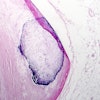
CLEVELAND - Public interest in screening whole-body CT scans is growing, thanks to the growing role of consumerism in healthcare and the empowerment of patients, as well as the desire to catch disease at an earlier stage. But are the exams valid screening tools?
At a special forum entitled "The virtual physical: A discussion of the technology and role of whole-body imaging in health screening," held Wednesday in conjunction with this week's Symposium for Computer Applications in Radiology (SCAR), Cleveland Clinic radiologists discussed the issues involved in this debate.
Thanks to the development of multi-row detector (MDCT) technology, whole-body CT scans can provide morphological information in as little as 20 seconds. This allows for relatively non-invasive evaluation of nonsymptomatic patients from a "pre-screening" perspective, said Dr. Michael Modic, chair of radiology.
However, the use of whole-body CT scans as a screening tool is controversial. Organizations such as the American College of Cardiology, the American College of Radiology, and the Food and Drug Administration do not advocate its use. In addition, there are no rigorous peer-reviewed studies that justify the use of whole-body CT as a screening test, Modic said.
"That is true for 90% of medicine (however)," he said.
Whole-body CT does offer the possibility of catching abnormalities at a stage where detection could make a difference. For example, MDCT allows for the entire lung region to be scanned quickly, Modic said. Tracked over a sustained period of time, the technique may offer clinical value.
"The sensitivity and specificity is probably quite high if you look at it as a sequential examination," he said. "The question that lives on, though, is will you be able to find the disease before the critical point? Will you be able to see it when it's surgically remediable? That's unknown."
For colorectal cancer, MDCT is providing the ability to see disease that couldn't be visualized before, Modic said.
"Whole-body CT has passed the test for colon cancer and lung cancer," he said.
Concerns and challenges
As for concerns about subjecting patients to unnecessary radiation exposure by receiving the procedure, Modic said that the dose received is roughly equivalent to the natural exposure a person would get by living in Denver for a year and a half, Modic said.
"That's still probably acceptable and considered low-risk," he said.
Also an issue: findings on a whole-body CT study could subject patients to further, perhaps unnecessary tests. Whole-body CT scans are also criticized because they represent a "snapshot in time" for patients, Modic said.
"This should be offered as part of the armentarium and tools available in the healthcare system," he said."(The studies) should be done as part of their longitudinal care if a patient selects (the study), and it should become part of their medical record."
Of course, the push for whole-body CT screening is coming from entrepreneurs -- and the prospect of increased remuneration for providers -- Modic said. The scans are also expensive, about $1,000, and are is not covered by insurance companies.
Also, it's a challenge to decide at what age the scan is appropriate, and how often it should be performed, he said. Ultimately, it's up to the patient to decide if the procedure is worth the pros and cons.
As CT technology continues to advance, it will continue to improve the detection and sensitivity for disease, said Dr. Brian Herts, a diagnostic radiologist in the Clinic's abdominal imaging section.
"Hopefully CT will become easier, more reliable, and contribute to the use of screening," Herts said.
By Erik L. RidleyAuntMinnie.com staff writer
May 2, 2002
Related Reading
CT sees growth, and new concerns over radiation dose, November 25, 2001
For the person who has everything, whole-body CT makes inroads, September 11, 2001
Copyright © 2002 AuntMinnie.com



















